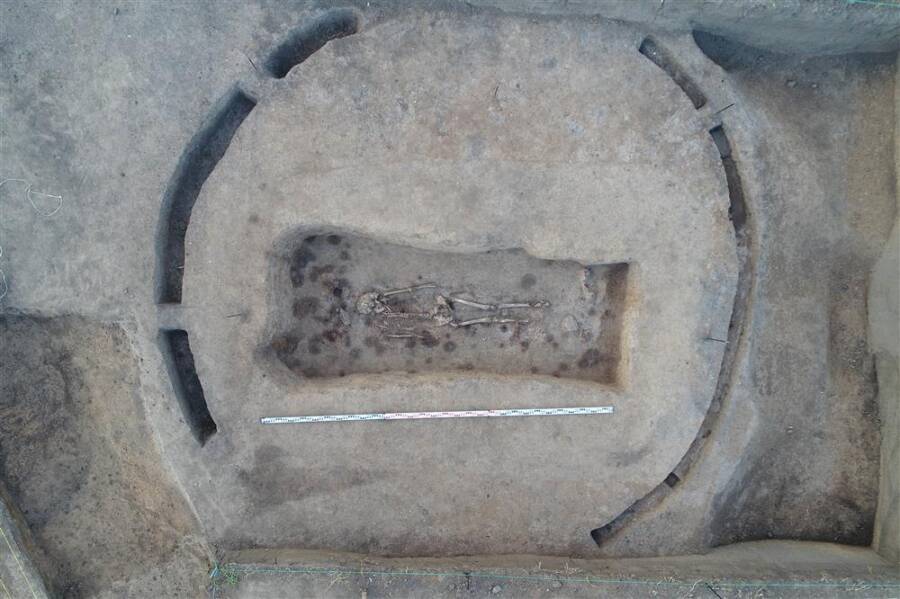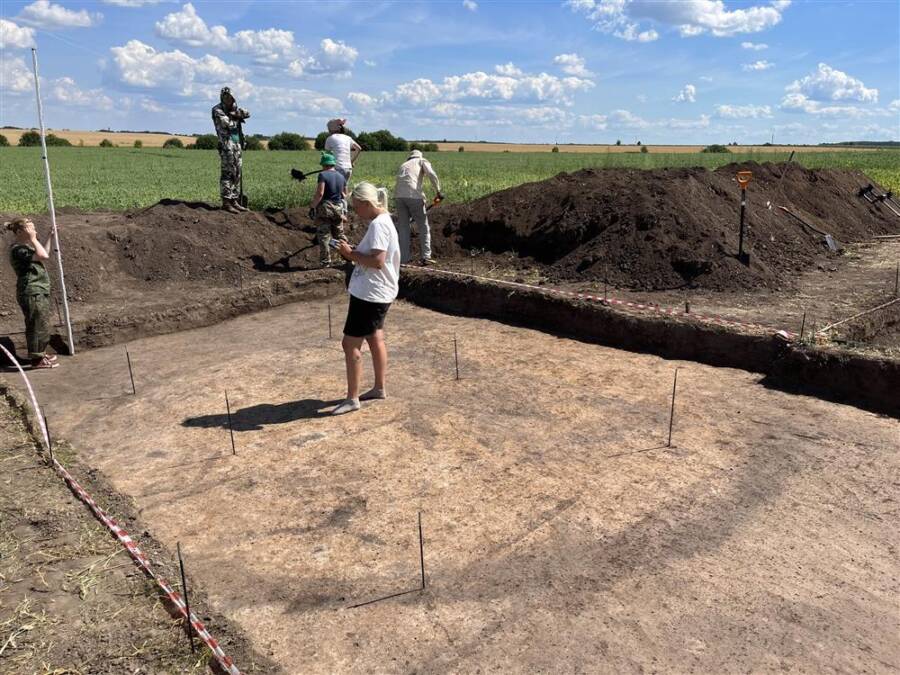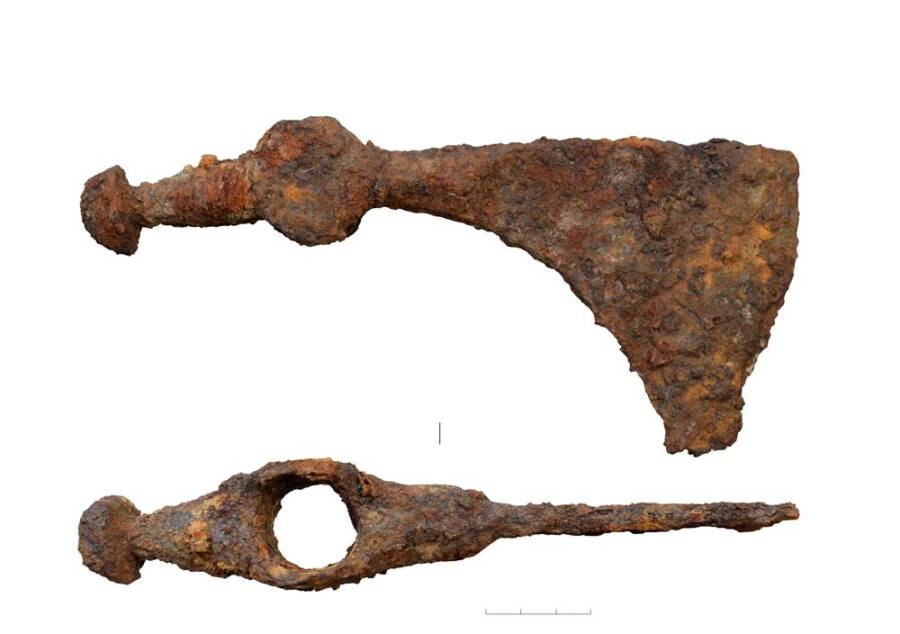The graves discovered at the Gnezdilovo burial ground near Suzdal, Russia, date back more than 900 years and likely contain men who held high status during their time.

Institute of Archaeology of the Russian Academy of SciencesTwo of the skeletons recently uncovered at the Gnezdilovo burial ground near Suzdal, Russia, were buried with rare battle axes.
In 1851, a medieval cemetery was discovered near Suzdal, Russia. Dubbed the Gnezdilovo burial ground, the site has undergone several excavations over the decades. The latest began in 2020, and archaeologists have uncovered roughly 50 graves in the last four years.
Recently, the excavations revealed two skeletons buried with rare battle axes and other fascinating grave goods, giving researchers a glimpse into the culture of Russia 900 years ago.
Archaeologists Excavate Graves At The Gnezdilovo Burial Ground

Institute of Archaeology of the Russian Academy of SciencesThe Gnezdilovo burial ground is located near the city of Suzdal.
In 1851, Count Aleksey Sergeyevich Uvarov, a Russian scholar and archaeologist, came upon a burial ground near Suzdal, about 145 miles northeast of Moscow. The site dated back to roughly the 11th century.
Uvarov and his team carried out minor excavations at the cemetery, and other scientists studied the site over the decades, but when the Institute of Archaeology of the Russian Academy of Sciences began excavations in 2020, most of the graves were still untouched.

Institute of Archaeology of the Russian Academy of SciencesArchaeologists have excavated dozens of graves at the site over the past four years.
Since then, archaeologists have unearthed around 50 burials and countless artifacts, including “prestigious” jewelry, pottery, and coins.
However, the most shocking discovery so far has been two graves containing the remains of men who were interred with rare metal battle axes and other unique grave goods.
Who Were The Men Buried With The Axes At Gnezdilovo?

Institute of Archaeology of the Russian Academy of SciencesBoth men were buried with bronze belt buckles shaped like lyres and battle axes that were popular in the 11th and 12th centuries.
The first burial archaeologists unearthed contained the remains of a man who died between the ages of 35 and 40. He was buried with a bronze belt buckle shaped like a lyre, a knife, a ceramic vessel, and his metal battle ax.
“Axes of this type, originally associated with the nomadic environment, came into widespread use in Rus’ in the 10th to 11th centuries,” researchers from the Institute of Archaeology of the Russian Academy of Sciences wrote in a statement.
The next grave over contained a similar burial: a man between the ages of 25 and 30 who was also interred with a lyre-shaped belt buckle and a battle ax. However, in this second grave, archaeologists also found equestrian equipment and weights that may have been used to weigh coins.

Institute of Archaeology of the Russian Academy of SciencesThe metal battle axes found in the graves were popular in Russia during the 11th and 12th centuries.
“The joint finds of weapons, scales, and weights in male burials are convincingly interpreted as an indication that these burials belonged to people who performed fiscal functions, which involved weighing coins collected as taxes,” researchers explained in the statement.
Alongside the graves, researchers have also recovered the remains of women and children buried with “temple rings, signet rings, and glass beads,” as well as knives and vessels containing food.

Institute of Archaeology of the Russian Academy of SciencesThese vessels were also discovered among the burials at the Gnezdilovo site.
Interestingly, Pagan Slavic rites forbade burying weapons with the deceased, making these graves particularly rare. The burials are also helping experts build a timeline for the spread of Christianity in the region since burying items denoting social status was reportedly forbidden according to Christian teachings at the time.
Overall, archaeologists are amazed at the wealth of artifacts and the information they’re revealing about this transformative period in Russian history.
“Excavations in Gnezdilov provide a unique opportunity to fully reconstruct the burial rite of the Russian squad of the era of Yaroslav the Wise and his successors and the general appearance of the military culture of this era,” the researchers concluded. “They bring into the general panorama of the heritage of the Suzdal land bright, previously unknown monuments reflecting historical events and the general color of the most ancient period of its history.”
After reading about the metal battle axes found in 11th-century Russian graves, dive into the story of Olga of Kiev, the vengeful 10th-century ruler of Kievan Rus. Then, learn about the Viking Berserkers, the fearsome warriors who fought in a trance-like state.





